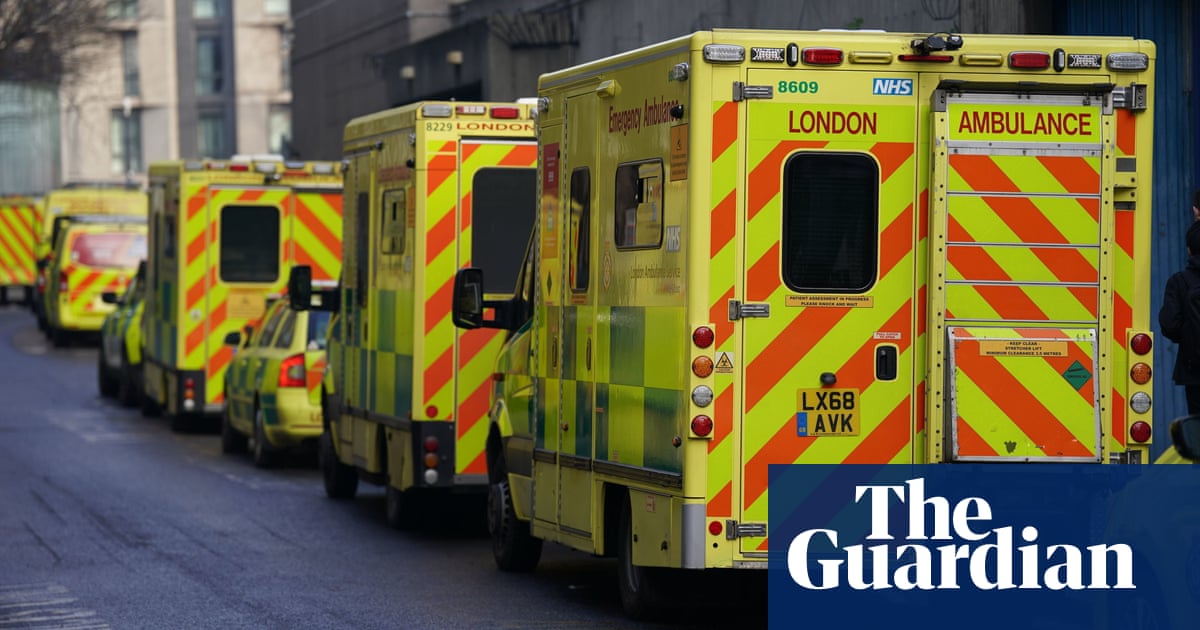
It’s embarrassing to tell a patient being discharged from hospital that they can’t be seen for months. Or assure them that you will check with the clinic booking team, when you know there is no capacity. It’s demoralising to work long hours in A&E only to have more people waiting for treatment than when you started your shift. To know so much of your work in the emergency room would be unnecessary if outpatient services were not stretched beyond their limits.
Damaging waiting times have existed for years, caused by the government’s refusal to properly fund the NHS. Waiting times for GP and hospital appointments were the second most common reason given in a 2019 King’s Fund study about why patients were dissatisfied with the NHS. The pandemic has exacerbated this problem. Some 1.2 million people in England have now been waiting over six months for essential services, a figure that is almost five times higher than it was in 2019.
NHS workers have watched the number of people waiting to be seen for essential care grow during the pandemic, and now many doctors and healthcare workers face the almost impossible task of increasing the number of patients they see in clinics, or increasing the number of operations they perform. Many have responded with disbelief and anger; others have felt they have no choice but to leave the health service altogether.
Behind these statistics are people in pain, fearful about the effect long waits could have on their health. When targets are missed for urgent operations or cancer diagnoses, mortality increases. Waiting times were a primary reason for the downgrading of the UK’s healthcare system in a recent report by the Commonwealth Fund, a US thinktank, from best in the world to fourth.
My first job as a doctor was in orthopaedics. As the junior doctor, I went with the consultant orthopaedic surgeons on ward rounds. On any given day they would also be responsible for theatre lists, clinics, departmental meetings and the paperwork this entailed. The ward rounds were rushed. If the consultant had to wait for more than a moment for the patient to be ready, they were passed over. Often, any instructions were given as the consultant left the ward to undertake their next task. While the consultants couldn’t wait, patients had to.
I was trained in breaking bad news while studying as a medical student. At first, I imagined this would be put to use in explaining diagnoses, or discussing treatment options. Instead the bad news I broke to patients most often was that an operation would be delayed. These included essential treatments such as hip fracture repairs, which UK guidance states should be performed on the day of – or the day after – admission. Evidence shows that operating on somebody within 24 hours of their admission reduces the risk of complications such as pressure ulcers, and the risk of mortality is reduced if the operation is performed within 48 hours. The Royal College of Physicians’ hip fracture database shows only 69% of patients received hip fracture surgery by the day after admission in 2020.
In my second year as a junior doctor it was my turn to see patients in A&E and outpatients in clinics. Though I’d been frustrated at my consultants’ inability to wait, waiting soon became something I couldn’t afford to do. If a patient asked for a moment to look up an old clinic letter on their phone, I would say I’d come back. Often test results were delayed, or specialists were not available to give advice. The knock-on effect this would have on my day – the beating of a butterfly’s wings in the morning causing tornadoes by the afternoon – led to anxiety and frustration. Patients would see me, or those I worked with, overworked and defeated. While they’d often respond with understanding, this was a lot to ask from someone who had waited so long to be seen.
People would arrive at A&E and wait hours because they had been waiting months or years for specialist services – for chronic pain that was unmanageable at home, or for something as simple as a medication usually prescribed by a specialist that had run out when a clinic was postponed. Meeting patients, I was struck by their anger and distrust before I had even said a word.
Waiting times can seem like a distinct, isolated problem, but they infiltrate all aspects of patient care. Most obviously, they overburden emergency services, as people who have waited months to be seen for a health problem feel they have no other choice but to turn to A&E. The effects can be more insidious too, eroding the trust that so many place in the NHS and marring the relationships healthcare workers form with their patients. These problems are glaringly obvious to anyone who works in the NHS. Though the government provided £1bn to deal with the backlog of care in England due to the pandemic, nearly 5.5 million people are still on NHS waiting lists.
The health secretary, Sajid Javid, admits this will probably rise as people who stayed away from hospitals and GP surgeries during the pandemic begin to return. In a recent interview he rightly encouraged anyone who needs care to come forward, but did not provide any concrete solutions to NHS waiting times, instead promising the government would “see what more we need to do” about the situation. It’s hard to see how that differs from the current solution. And that solution – to do more with not enough – is not a solution at all.
Peter Endicott is a writer who has spent time working in the NHS as a junior doctor












